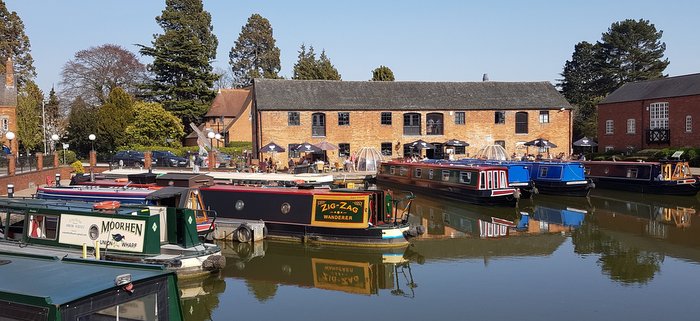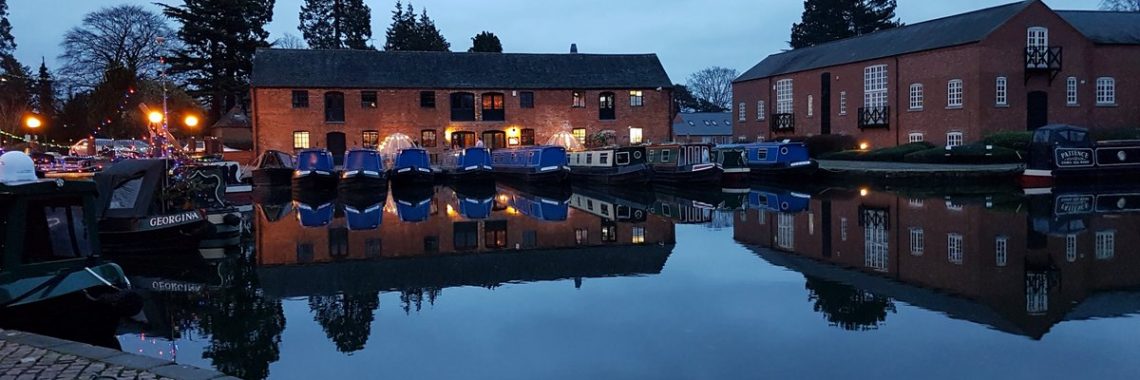History of Union Wharf
The history of Union Wharf Marina is rich and varied. The canal basin at Market Harborough is at the end of an arm running from the Grand Union Canal Leicester Line. It’s a bustling hire boat centre, as well as a popular destination from which to enjoy a canalside walk along the towpath. The Waterfront bar and restaurant attracts a social crowd by day and night, and modern apartment buildings overlook the basin.
Union Wharf as you see it now, is a leisure hub; but its origins were rather more practical.
Thoroughfare town
Back in the 18th century, Market Harborough was a staging point for horse-drawn coaches travelling between London and the Midlands. You’ll still see evidence of this in the town if, for example, you visit The Three Swans coaching inn which dates back at least 500 years. Whilst the highways in Market Harborough were regularly maintained to ease travel by roads, they were not able to contend with the large amount of goods transported during the Industrial Revolution.
By 1790, businesses began to turn a watchful eye to the canal network steadily growing across the country and linking major industrial areas. With barges able to carry nearly 40 tonnes in weight, and travel as quickly as horses and mules, the canal network seemed a safe investment. The development of a waterway then known as the Leicestershire and Northampton Union Canal got underway to link Leicester and the London/Birmingham Canal.
Canal development
Works reached the village of Gumley Debdale by 1797, but investment dried up all too quickly. Plans were altered, more money was raised and a branch of the canal finally reached Market Harborough in 1809.
Although this particular stretch of the waterway never extended beyond the town, Harborough Wharf served its purpose as a distribution centre for industry. Goods such as worsted cloth, grain, bricks, beer and coal were brought in and out of the town via barges and contributed to Market Harborough’s prosperity.
Change of direction
By the second half of the 19th century, the railways had taken a large share of canal traffic – they were quicker and more reliable, which made them more economically viable. In the first part of the 20th century, motorised vehicles took an even larger slice of the transportation pie and many waterways fell into disrepair.
But in 1950, the Inland Waterways Association held a Festival of Boats in the basin at Market Harborough. It was the first event of its kind, inspired by car rallies and designed to showcase canals as a leisure option. Around 100 boats attended the festival which was seen as the successful launch of a new era for the canals. Over the next two decades, interest began to grow in using narrowboats for recreation, particularly among families, and some canal-transportation companies began to convert their barges into pleasure craft.
Holiday boats
The latter half of the 20th century saw a growth in holiday hire boats and once again, the basin at Market Harborough flourished. Nowadays you can moor your leisure boat here as well as hire a narrowboat for a holiday or a day trip.
Walkers can enjoy the towpath all the way up to Foxton (a five mile stretch.) It is a generally well-kept route and there are several options for exploring en route. Try this guided tour from www.grandunioncanal.co.uk.

Union Wharf Narrowboats Ltd is the latest custodian of the marina. With our Boutique Narrowboats for couples, as well as boats for families and day-trippers, we are hope that in our own way we can make a small contribution to the heritage of the English waterways.

